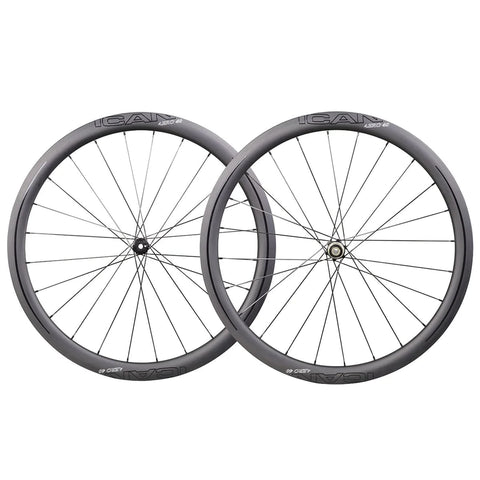There are somewhat several ways to interpret the gravel riding category. While some riders engage in races spanning countries, carrying all their required equipment on their bikes for several days, others choose to ride on country roads and lanes dotted with mud and potholes. Different riding methods call for different bikes and components; hence, it's important to get the correct wheels that fit your budget and dirt riding tastes. Should you intend to participate in races and events on your dirt bike, you might want to think about switching to a stronger and more aerodynamic wheel set to provide you some performance benefits in competition.
What size gravel wheelset do I need?
This decision should be based on the specifications of your frame. If your frame can only accommodate either 700c or 650b wheels, then you have to stick with the one that works for your frame. However, many frames now offer the option to run either size, so which one would be the right choice for you?
In general, 650b wheels can handle wider tires than the larger 700c size, with a slight compromise in rollover (how easily the wheel rolls over bumps).
If you prefer fast riding on narrower tires, especially with tarmac sections, then a 700c wheel would be the right choice. However, for rougher adventures, we would recommend you opt for 650b. Smaller wheels are also stronger, so if you are worried about strength for a loaded tour, then perhaps opt for the smaller size, too.
It's worth noting that in recent years, there have been fewer 650b tires available in the market, which may indicate that 700c is becoming the standard. Therefore, if you want to be future-proof, we suggest going with 700c.
For assistance in selecting the right bike size, please refer to The Bike Size Guide.
How important is rim width for gravel wheels?
Consider the internal rim width while shopping for wheels to help guide your purchase. This element influences your tire's profile generally. By straightening the sidewalls, wider rims can offer additional support in the corners; nevertheless, they could also somewhat increase drag. Whereas gravel or broad road rims can be as wide as 25mm, traditional road rims typically have an internal diameter of 16 to 19mm. Stretching a tire too far should be avoided since it can compromise the profile and shape, therefore affecting more than only the tread pattern.
Centre-lock or six-bolt rotors?
Consider the disc brake rotors currently fitted on your gravel bike while selecting the appropriate wheels for it. Usually available in wheels too, most gravel bike sets feature center-lock rotors. Still, it's interesting to know how centre-lock and six-bolt systems differ.
A center-lock mechanism hooks the disc to the wheel's hub using one lockring. Most of the time, this is the same kind of lockring used to hold your cassette to the freehub. Though the rotors themselves are usually heavier, the system is simpler and lets for a smaller hub. The same lockring tool will help you remove rotors or a cassette.
Conversely, the six-bolt mounting mechanism mounts the rotor to the hub shell by means of six T25 Torx bolts. This system has existed for a few decades.
Still, neither system stands much above the other. It is therefore advisable to keep using the kind of rotors you now have on your bike. In this sense, you save yourself from having to buy a fresh pair of appropriate rotors. Adaptors to solve any possible compatibility problems are also available for purchase.
Is carbon better than alloy for gravel wheels?
One can make gravel bike wheels of either carbon or aluminum. Although many riders want to ride with carbon wheels, it's important to consider that aluminum wheels offer greater value for your money, which could be what counts for some. Generally speaking, carbon wheels have the best strength-to-weight ratio, and, should you be ready to pay a premium price, they can provide better aerodynamic performance.
Currently offering not only reasonably priced but also highly quality carbon fiber wheelsets is ICAN. They also provide first-rate after-sales to guarantee client happiness.
Should I go tubeless?
Gravel cyclists have especially enjoyed the most recent developments in tubeless tire technology. Most modern wheelsets are tubeless capable and occasionally come with pre-installed valves and tape, which helps to reduce weight and run lower tire pressures for a more comfortable ride free of pinch-flat risk.
Still, first setting up the wheel and tire can be a little more difficult. Once set up, though, it nearly becomes a fit-and-forgotten method. Just remember to follow advice and check the level and condition of your sealant every six months.

